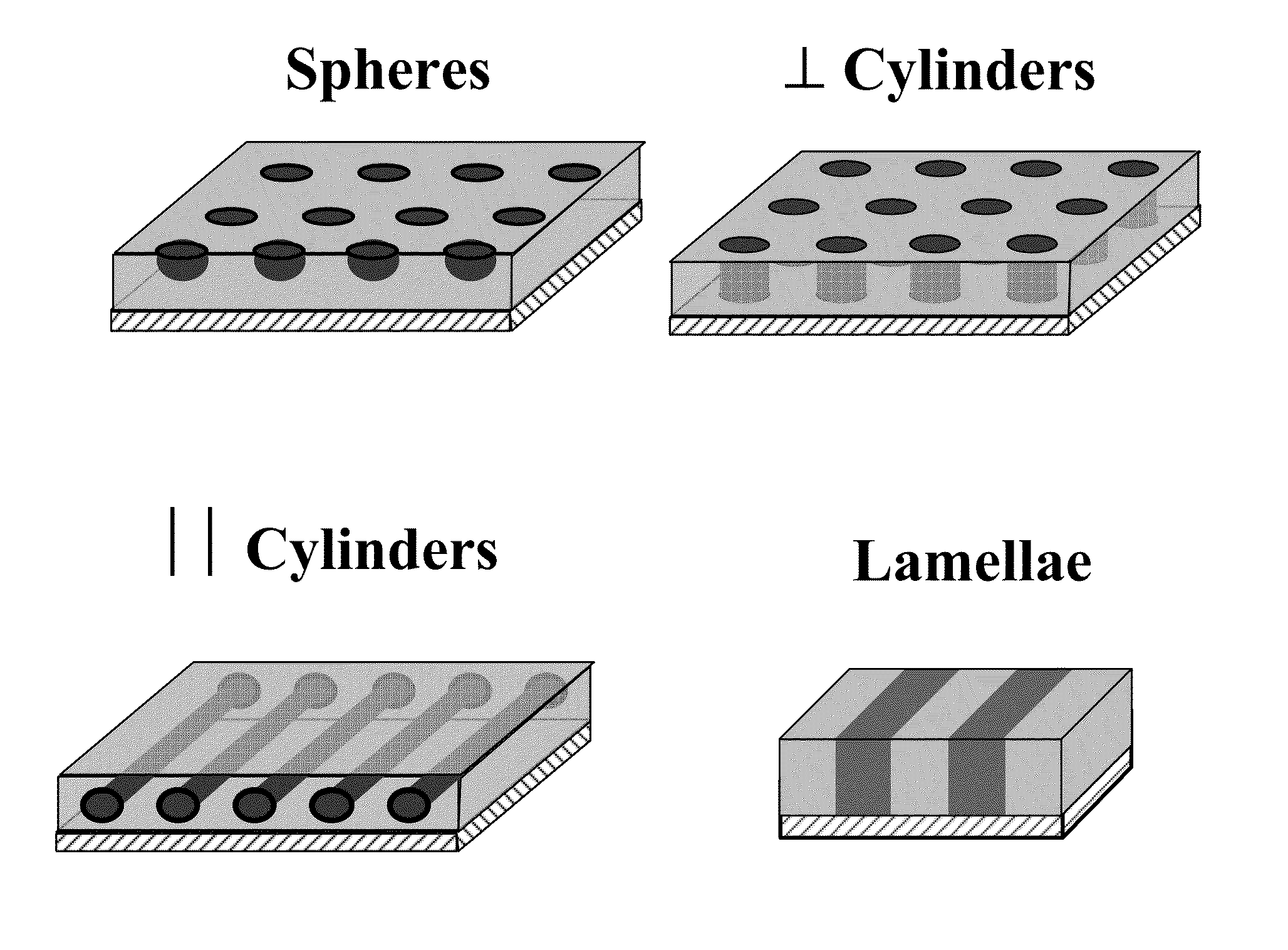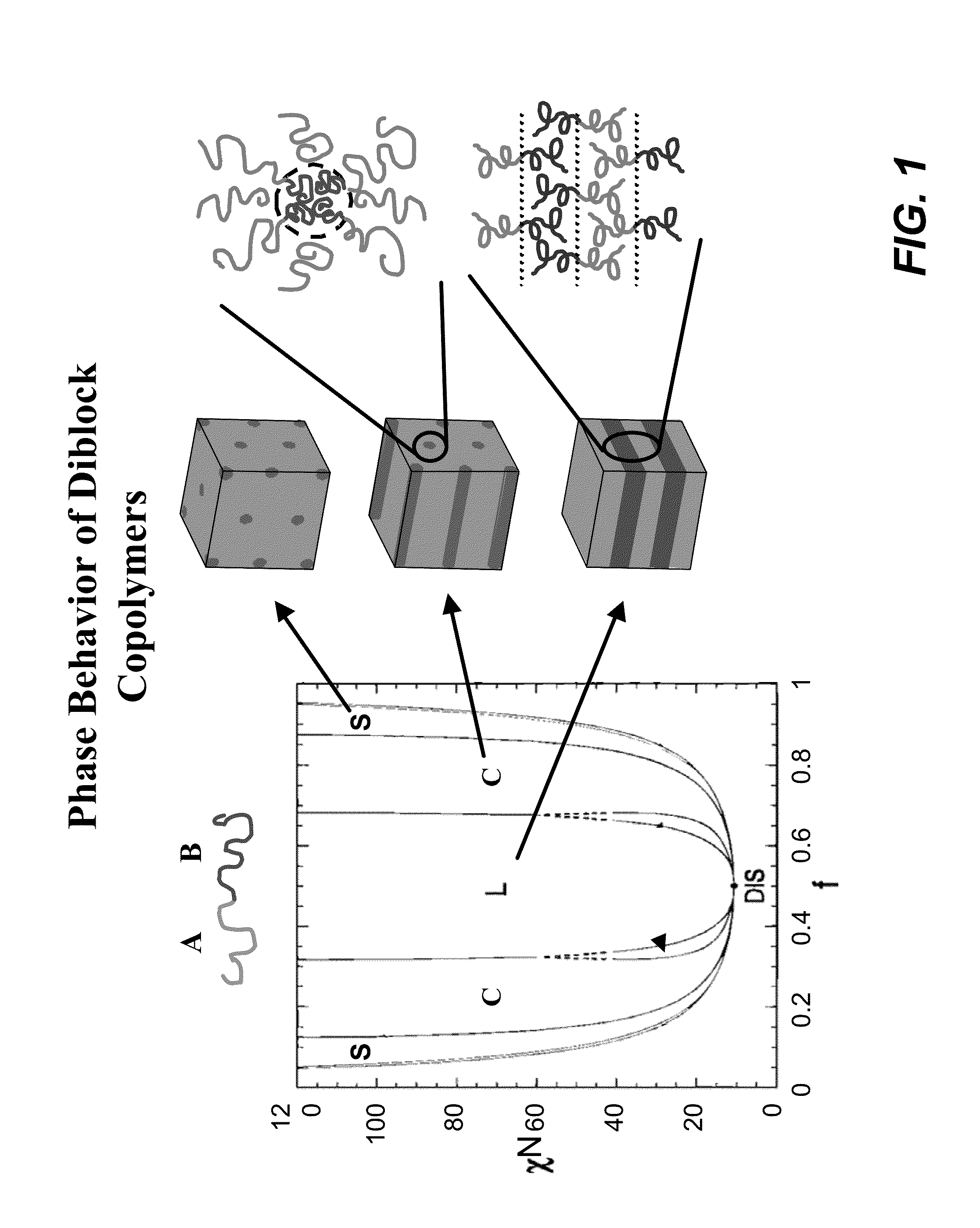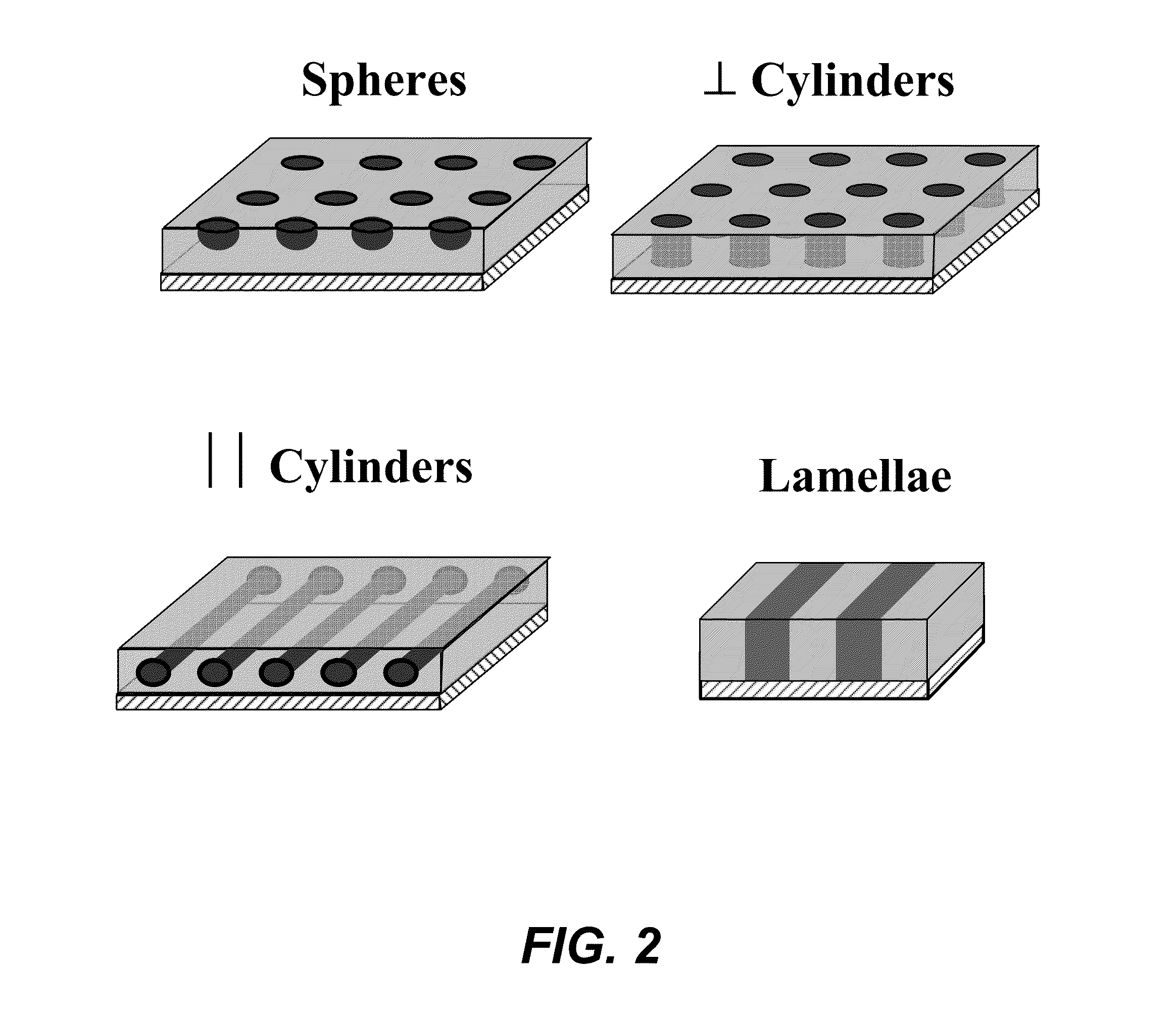Directed assembly of block copolymer films between a chemically patterned surface and a second surface
- Summary
- Abstract
- Description
- Claims
- Application Information
AI Technical Summary
Benefits of technology
Problems solved by technology
Method used
Image
Examples
example 1
Directed Assembly between Chemically Patterned and Chemically Homogenous Surfaces
[0061]Materials
[0062]Symmetric PS-b-PMMA (52 kg / mol PS, 52 kg / mol PMMA and PDI=1.04), symmetric PS-b-P2VP (40 kg / mol PS, 40 kg / mol P2VP, Lo≈53 nm, PDI=1.07), hydroxyl-terminated P2VP (P2VP-OH, 6.2 kg / mol, PDI=1.05) and P2VP (106 kg / mol, PDI=1.07) were acquired from Polymer Source, Inc., and used as received. PMMA photoresist was purchased from MicroChem Corp. and had a Mn of 950 kg / mol. Hydroxyl-terminated PS (PS-OH, Mn=6.0 kg / mol, PDI=1.07) was synthesized using anionic polymerization and hydroxyl-terminated P(S-ran-MMA (Mn=6.2˜6.8 kg / mol, PDI=1.20˜1.25) was synthesized by nitoxide-mediated living free radical polymerization (NMP). Crosslinking PS, crosslinking P(S-ran-MMA) and crosslinking PMMA brushes (xPS, xSranMMA and xPMMA) were synthesized. The fraction of crosslinking agent in the crosslinking brushes was about 4% and the fractions of styrene monomer in the xPS, xSranMMA and xPMMA were about 96%...
example 2
Directed Assembly between Chemically Patterned and Chemically Homogenous Surfaces
[0075]Monte Carlo simulations of a symmetric A-B diblock copolymer corresponding to PS-b-PMMA Mn=about 104 kg / mol and χN=37 were performed. A and B represent PMMA and PS, respectively. The pattern on the bottom surface had stripes of width W repeated with a period Ls=Lo, the width fixed at W=Lo / 2. The areas between these stripes are referred to as “background,” such that the pattern includes alternating stripe / background / stripe / background regions. The interactions between the blocks (A or B) with the patterned surface are specified by four parameters: Λ(A-stripe), Λ(A-background), Λ(B-stripe), and Λ(B-background). For simplicity it was assumed that for striped and background areas, the attraction for the preferred block is equal in magnitude to the repulsion for the nonpreferred block, i.e., Λ(A-stripe)N=−Λ(B-stripe)N=Λstripe and Λ(A-background)N Λ(B-background)N=Λbackground. For these parameters there ...
example 3
Directed Assembly Between Two Chemically Patterned Surfaces
[0076]Using lithography and an oxygen plasma, a PS brush on a silicon wafer was converted to chemical patterns with alternating stripes of PS brush and oxygen-plasma-treated PS brush, which preferentially wet PS and PMMA blocks of polystyrene-block-poly(methyl methacrylate) (PS-b-PMMA), respectively. The period of the chemical patterns (Ls=76 nm) was commensurate with that of PS-b-PMMA (molecular weight, Mn=85-91 kg / mol, bulk lamellae period, Lo=75.8 nm). All stripes had the same width (W of 38 nm). By annealing at 230° 0 for 3 days under vacuum, the block copolymers could self-assemble into periodic lamellae with domains in registration with the chemical patterns. Three processes, resulting in structures I, II, and III such as those shown in FIGS. 4a and 4b, were performed. All films had the same thickness of 2Lo. The angle between the stripes on the bottom- and top-substrate was manually aligned to be about 90°. After asse...
PUM
 Login to View More
Login to View More Abstract
Description
Claims
Application Information
 Login to View More
Login to View More - R&D
- Intellectual Property
- Life Sciences
- Materials
- Tech Scout
- Unparalleled Data Quality
- Higher Quality Content
- 60% Fewer Hallucinations
Browse by: Latest US Patents, China's latest patents, Technical Efficacy Thesaurus, Application Domain, Technology Topic, Popular Technical Reports.
© 2025 PatSnap. All rights reserved.Legal|Privacy policy|Modern Slavery Act Transparency Statement|Sitemap|About US| Contact US: help@patsnap.com



